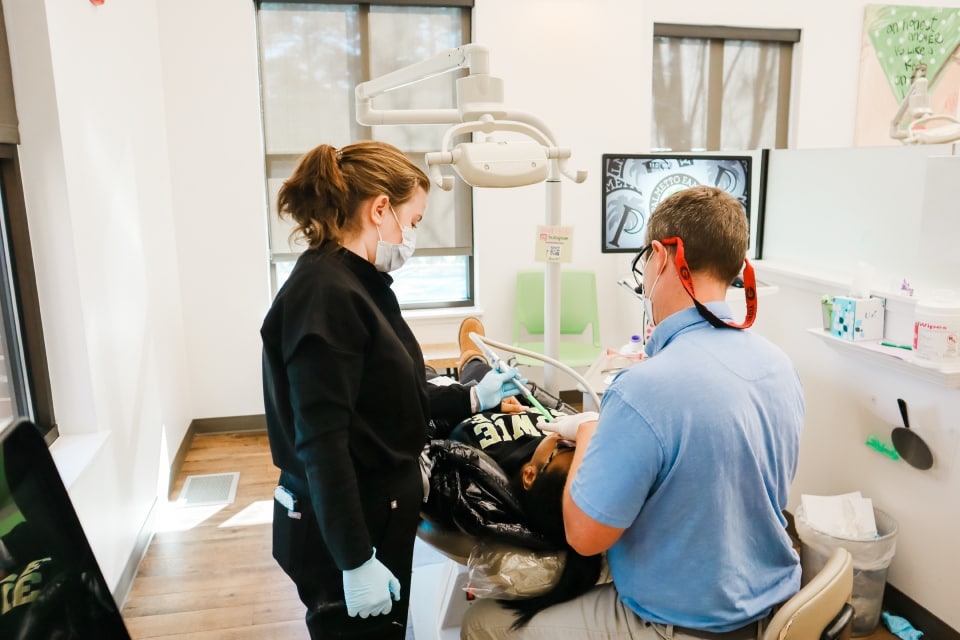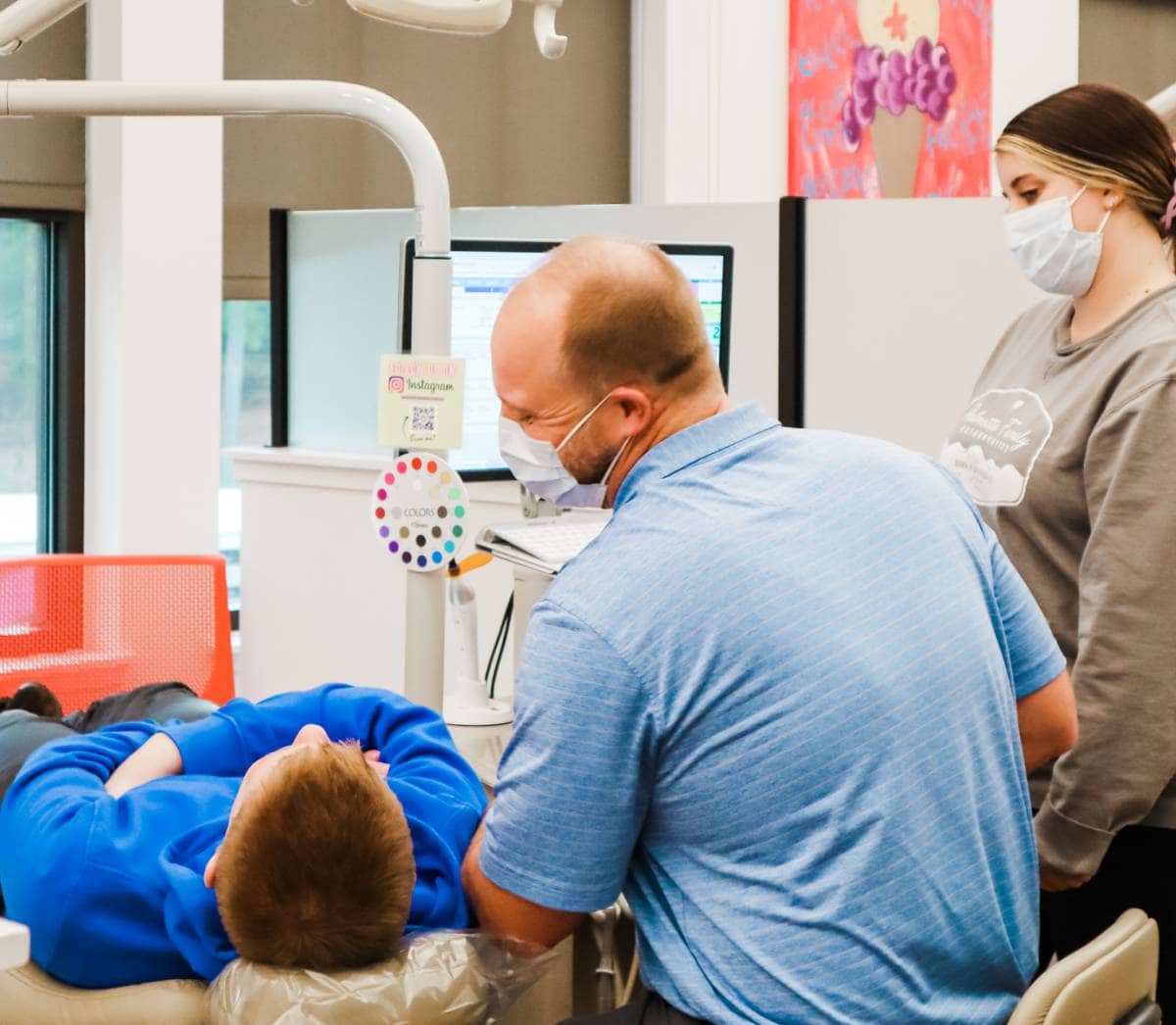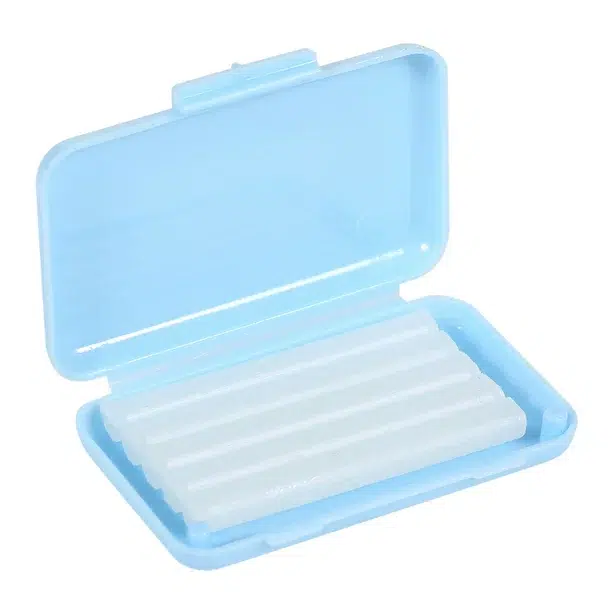Life During Treatment
Proudly Serving Smiles Since 2007
common-emergencies
Common
Emergencies
Please contact our office as soon as possible in case of an emergency. We will be more than happy to accommodate you with an emergency appointment that day or at your earliest convenience. If the emergency occurs after office hours or on a weekend, our answering service will instruct you on how to proceed with contacting one of our team members.
Please contact our office as soon as possible in case of an emergency. We will be more than happy to accommodate you with an emergency appointment that day or at your earliest convenience. If the emergency occurs after office hours or on a weekend, our answering service will instruct you on how to proceed with contacting one of our team members.

Call us if...
- A Wire, Bracket Or Band Breaks – Unwanted tooth movement can occur, which increases treatment time.
- Poking Wires Or Irritations – From time to time your oral cavity may become irritated due to your appliances.
- Lost Spacers – Spacers accomplish a very specific goal, if you lose one please call so that we can replace it if needed.
- Extreme Pain – Intense pain is not normal and should be addressed immediately.
home-care
Home Care
As always, we’re here to help if you have any questions along the way! Please don’t hesitate to give our team a call with any questions or concerns.
During Treatment
Having braces should not cause any major changes in your day-to-day activities. You can still dine out, play instruments & have fun pictures taken. With proper care and maintenance, you can promote your oral health while on your way to a more beautiful smile.
If you play a wind instrument, several companies make mouth guards and lip protectors, although you may not need them. For certain sports, it is a good idea to wear a mouthguard. Ask us about recommendations based on your specific needs when you come in for your next appointment.
Eating with Braces
Try to avoid foods that are particularly hard, chewy, crunchy, or sticky. These types of foods can loosen, bend or even break your brackets or appliances.
Examples of foods to avoid:
- Popcorn
- Tortilla chips, pretzels
- Hard candies
- Chewing gum
- Nuts
- Granola bars
- Raw veggies
- Whole fruits such as apples & pears
- Hard taco shells
Try to choose softer foods, and cut your foods into smaller pieces before eating rather than trying to bite through them. Chop whole fruits such as apples and pears into bite-sized pieces before eating, and please avoid chewing on gum and ice.
After eating, always check your braces for any loose or broken appliances. If you find any problems, please give our office a call so that we can make any needed adjustments.

Brushing & Flossing
Brushing
Carefully follow all instructions you are given regarding dental care. Specific steps may vary depending on the type of braces you have. Be sure to brush thoroughly after any meal or snack. It is important to keep your teeth and braces as clean as possible to avoid potential problems. Also, rinse with water or mouthwash after brushing. It’s a good idea to carry a travel toothbrush when you will be away from home. Before going to bed, be sure to brush thoroughly and floss carefully. It may take a little extra time, but this is an important step in maintaining oral hygiene on your way to a better smile and healthier teeth.
Use a soft rounded bristle toothbrush that is in good condition. Toothbrushes will wear out faster and need to be replaced more often when wearing braces, so be sure to keep some spare toothbrushes on hand. When brushing you should also brush your tongue and rinse thoroughly when done.
Flossing
Flossing is an important part of good oral hygiene. With braces it may take a little more time and practice, and a floss threader may be necessary to get the floss under the archwire. Make sure you clean along and under the gum lines with floss each night before going to bed. After you have properly brushed and flossed, your braces should look clean and shiny, making it easy to see the edge of the braces.
Removable Appliance Rules & Tips
Please wear your appliance at all times, even when sleeping, or as instructed by your doctor. Doing so can help you reduce treatment time and will also ensure the best possible results from your orthodontic treatment.
Try to choose softer foods, and cut your foods into smaller pieces before eating rather than trying to bite through them. Chop whole fruits such as apples and pears into bite-sized pieces before eating, and please avoid chewing on gum and ice.
Be sure to bring your appliance to every orthodontic appointment.
Clean your removable appliance both morning and night to remove dental plaque. You can clean the appliance with a toothbrush and toothpaste.
Please place your appliance in the case when not being worn.
If you have pets, do not place the appliance anywhere they can reach it. Pets are attracted to saliva and will enjoy chewing on your appliance!
Please do not place your appliance on a napkin or tissue, it may be accidentally thrown away! You may remove your appliance while participating in physical activities, but be sure to wear a mouthguard to protect your teeth, gums and lips.

Rubber Bands
During orthodontic treatment, your orthodontist may use elastics to assist your braces in making adjustments to your teeth and bite. They are typically attached to brackets on the upper and lower teeth and use tension to create changes in the teeth and bite.
You should always wear your elastics as directed. You may remove them when eating and brushing, but you should always replace them with new ones afterward. Only wearing elastics occasionally will prolong treatment and cause any tenderness to persist.
You may experience some soreness when first wearing elastics, but it should subside after a few days. Over-the-counter medications like Ibuprofen should help, but if the tenderness continues for more than a week, give us a call.
If an elastic breaks, please replace both the broken one and the adjacent rubber band to ensure the same force is applied on each side. You should always carry an extra pack of elastics with you in case one breaks. If you think you may run out before your next appointment, please stop by our office for more elastics, or give us a call and we can mail some to you.
Dental Wax
Dental wax can be very helpful with any areas that are irritating your mouth or gums. It’s an excellent solution if you need temporary relief from a mouth appliance that could be irritating.
This can be especially helpful at night when sleeping when your mouth gets drier than normal. There are a number of options for dental wax, which can be found at most stores — in person or online.
Dental wax is an excellent solution if you need a comfortable, temporary fix to cover a protruding piece of a mouth appliance, such as braces. Also known as orthodontic wax or tooth wax, it can provide a temporary cover of sharp surfaces inside your mouth and help protect your mouth’s soft tissues.

Useful Items for Patients
Keep these materials on hand to help with most common orthodontic maintenance & minor emergencies.
- Interdental or Proxabrushes fit between teeth and help patients to clean around wires without causing damage.
- Non-medicated dental wax be placed over brackets or wires that may be irritating to your gums.
- Antibacterial mouthwash can be used to reduce inflammation and prevent infection. For minor sores in the mouth, Peroxyl, an antiseptic containing hydrogen peroxide, may be used up to 4 times a day after brushing. Refer to the product label for specific instructions.
- Dental floss, an interproximal brush, or a toothpick can be used for removing food that gets caught between teeth and wires.
- Sterile tweezers can be used to replace orthodontic rubber bands that have come off.
- A Q-Tip or pencil eraser can be used to push a wire up against a tooth if it has become loose or is irritating the gum or cheeks. If it is not possible to reposition the wire so it is more comfortable, place wax over the end of the wire and call our office so we can have the wire adjusted and put back in place.
- Salt is used for warm salt-water rinses, which help heal sore gums and tissues in the mouth.
- Non-prescription pain relievers such as acetaminophen or Ibuprofen, can help with temporary discomfort that sometimes occurs for the first day or two after an orthodontic adjustment.
- Topical anesthetic treatments, such as Orabase or Oral-gel, can be applied with a Q-Tip to any abrasions or sores in the mouth should they occur.
After eating, always check your braces for any loose or broken appliances. If you find any problems, please give our office a call so that we can make any needed adjustments.
Invisalign Care
Do
- Use your fingers to put your aligners in place. First place the aligners over your front teeth, and then use your fingers to push the aligner down gently over your molars. When aligners are correctly inserted, they will fit all the way down on the teeth, with no space in between. Aligners will fit tightly at first but should fit well at the end of the two week period.
- Keep aligners in except when eating, brushing and flossing. It’s also best to remove aligners when drinking any beverages other than water.
- Remove the aligner by pulling it off both sides of your back teeth simultaneously then lifting it off your front teeth. Place your aligners in the case we provide anytime they are not being worn.
- Clean aligners with a gentle toothbrush and lukewarm water.
- Wear each set of aligners for 2 weeks unless our office directs you to vary from that schedule.
- Wear aligners in the correct numerical order. (Each aligner is labeled by number and with a U or L to designate upper or lower.)
- Keep all your old aligners and bring them to your orthodontic appointments.
Don’t
- Don’t place your aligners in or on napkin, it might be accidentally thrown away.
- Don’t use your teeth to ‘bite’ your aligners into place.
- Do not use Denture cleaner, alcohol, or bleach to clean your aligners.
- Do not use boiling or hot water on your aligners.
- Do not chew gum with aligners in.
- It is best not to smoke while wearing aligners. The smoke can stain the aligners and your teeth.
Just in Case
- If you lose the tab attached to your tooth that helps the aligner snap on, please call our office as soon as possible so we can determine if you need to come in before your next scheduled appointment.
- If you lose one of your aligner trays, please wear the next tray if you have it. If you do not have the next tray, wear the previous tray. It is extremely important to use a tray to keep teeth from shifting. Call our office to let us know which tray was lost so that we can determine if a replacement is needed. There will be a fee if replacement trays are required.
food-facts
Food Facts
It’s always smart to think before you munch with braces! Check out our lists below on what to enjoy and what not to eat when having braces.
The Think Before You Munch List
Foods you can eat, but only if you follow the rules…
- Hard shell tacos, pretzels, Doritos, Fritos, Cheetos etc.
- Fruits and veggies
- Corn cut off the cob
- Chicken, steak, pork chops, ribs etc.
- Gum (only Trident brand with xylitol!)
The Don't Even Think About It List:
Foods you may NOT eat…
- Ice
- Nuts, Slim Jims, beef jerky
- Tootsie Rolls, caramels, Rolos, Snickers, Butterfingers, frozen candy bars
- Candy canes, lollipops, Jolly Ranchers, Skittles, Nerds
- Starbursts, Twizzlers, Fruit Roll-Ups, taffy, Air Heads, gummy bears, bubble gum
Anything that is hard, sticky or chewy. Trust us, you don’t want your brackets breaking!
Other things that break your braces:
- Chewing pens & pencils
- Chewing nails
- Using your teeth to open things
- Picking your teeth with your fingers
